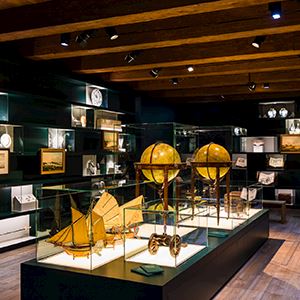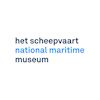
21. Oost 1, Maps & Marvels: Curiosities
It is difficult for us to imagine now, but in the sixteenth and seventeenth centuries, most of the objects in this room were completely new to Dutch people. Voyages to distant lands brought Europeans into contact for the first time with exotic nature and the then unfamiliar cultures of other continents. Well-to-do merchants and governors kept what were known as ‘cabinets of curiosities’ containing a multiplicity of unusual and striking objects, such as seashells from Ambon, porcelain from China, a whale tooth from the Arctic, lacquerware from Japan and swords from India. The cabinet of curiosities was a kind of museum, before these were established, and the objects were conversation pieces that stimulated the imagination and enabled the host make a good impression. The term ‘curiosity’ was a reference to items that were exceptional or rare, rather than the human sense of inquisitiveness. The combination of objects was intended to represent the whole world and, along with globes depicting the Earth and the heavens, bring the world and the universe quite literally within reach.


The National Maritime Museum
Het Scheepvaartmuseum (The National Maritime Museum) shows the strong connection between the maritime world and society as a whole, and more specifically the impact of this on the lives of many individuals. The collection of The National Maritime Museum is one of the largest and most notable maritime collections in the world with approximately 400,000 objects, including paintings, models of ships, navigation instruments, and maps of the world. Discover 500 years of Dutch Maritime history as well as its strong links to today’s society and the society of the future.
- Kattenburgerplein 1
- Amsterdam Netherlands
- (020) 52 32 222
- www.hetscheepvaartmuseum.nl
